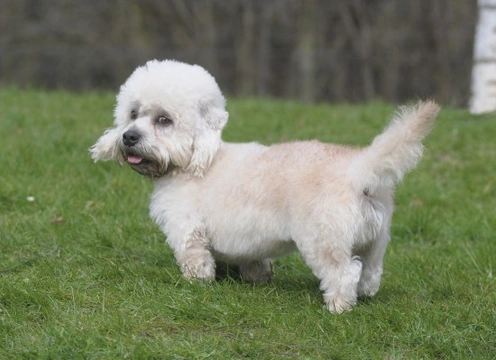Pets
Pets for studWanted petsBreedersAccessories & services
Knowledge hub
Support
Support & safety portal
The history and background of the Dandie Dinmont terrier
The Dandie Dinmont terrier is of course a dog from the terrier breed group, and is native to Scotland.
While they are not a common sight within the UK or even in their home country of Scotland any more, they are instantly recognisable when you see them, thanks to their long bodies and short legs, as well as their distinctive top-knot of hair on the top of their heads.
The Dandie Dinmont’s rarity today means that they are classed as a vulnerable native breed by the UK Kennel Club, which maintains figures on the numbers of new puppies of each breed registered each year. There are now three specialist Dandie Dinmont breed clubs active in the UK in order to promote ownership of the breed, and proactive attempts are being made to increase their popularity and numbers.
In this article, we will look at the known history and background of the Dandie Dinmont terrier in more detail. Read on to learn more!
The origins of the Dandie Dinmont terrier
The Dandie Dinmont has a documented history going back to the 1600’s, and the historical home of the Dandie Dinmont is the borderlands between Scotland and England, where the breed was used for hunting otters and badgers. It is thought that the breed’s more ancient history goes back to Northumberland, and potential breeds that were involved in the early efforts to produce the Dandie Dinmont include the Border terrier, Scottish terrier and Skye terrier.
Outside of the Scottish borders, the Dandie Dinmont terrier was not widely distributed or known of until around 1814, when the breed was mentioned in the popular novel “Guy Mannering” by Sir Walter Scott. Sir Walter Scott had spent some time in the Scottish Borders, and while there, he learnt of the Dandie Dinmont and was impressed by their working prowess, and so included the breed within his book.
One of the main characters within the book was named “Dandie Dinmont,” who owned two terriers named Mustard and Pepper. Dandie Dinmont was based on a real-life farmer and owner of dogs of the breed, named James Davidson, and Davidson was the first person to document his breed lines and is widely accepted as the founder of the Dandie Dinmont breed as we know it today. The breed is ergo named after a fictional character, which was based on a real-life person!
The development of the breed
From the mid 1800’s onwards, the Dandie Dinmont was bred out to various other breeds in order to strengthen the breed line, and the Dachshund, another long bodied, short legged dog was one of the main components of the mix. The Dandie Dinmont may itself have been a component breed in the development of the Bedlington terrier, although this is not definitively documented.
The Dandie Dinmont Terrier Club was founded in 1875, and is the third oldest breed club in the world, coming only two years after the founding of The Kennel Club itself! The breed standard for the Dandie Dinmont was established by William Wardlaw Reid, one of the club’s founding members, and the first Dandie Dinmont club show was held in 1877. Club breed shows were held on an annual basis without interruption, other than during World War Two, up until 1982.
Today, the Dandie Dinmont Terrier Club is still going strong, and there are also another two clubs specifically dedicated to promoting the breed, being the Caledonian Dandie Dinmont Club, and the Southern Dandie Dinmont Terrier Society.
The rarity of the breed today
While the breed has a long and well documented history and is supported by three large and well established breed clubs, like many other dog breeds with relatively small gene pools, the Dandie Dinmont terrier almost died out entirely during World War Two.
Many of the kennels where the breed were bred and raised were destroyed during the war, and ownership of dogs fell into decline during the war years in general, due to the scarcity of resources. After World War Two, several kennels worked hard to re-establish the breed, including Bellmead Kennels in Surrey. The Dandie Dinmont was recognised as one of the rarest native British dogs in 2006, as part of The Kennel Club’s attempts to promote some of the vulnerable native dog breeds.
In order to be classed as a vulnerable native dog breed, less than 300 new puppies registered within one year is required, and in 2003, just 90 Dandie Dinmont puppies were registered.
Outside of the UK, breed ownership was also on the decline, with only 75 Dandie Dinmont terrierpuppies registered in America during the same year. Registration, and so, numbers of Dandie Dinmont terriers have increased slightly year on year since 2003, although with only 151 new puppies registered in 2010, there is still some way to go.
Low numbers of available puppies in itself turns into something of a catch 22 when it comes to increasing numbers of the breed, as of course their rarity leads to higher demand, which increases prices and may discourage some would-be buyers from purchasing a dog of the breed.



